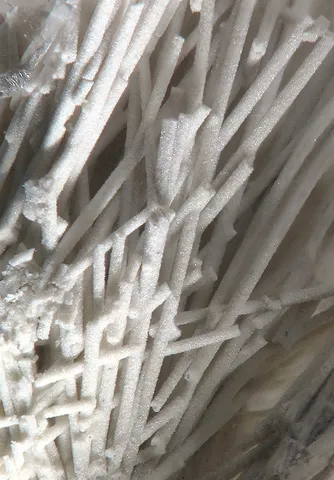BISMITE
Class : Oxides and hydroxides
Subclass : Oxides
Crystal System : Monoclinic
Chemistry : Bi2O3
Rarity : Rare
Bismite is a rare bismuth oxide. It is a mineral of high density (more than 8) which results from the oxidation of bismuth minerals in the superficial zone of high temperature veins. Its name derives from its chemical composition : bismuth. In collection samples, confusion with bismutite, bismuth carbonate, seems frequent. It forms earthy to powdery masses, sometimes compact, yellow to grey-yellow, white and greyish-green ; the crystals are microscopic.
Main photo : Bismite from Cogola Alta Mine, Andalusia, Spain © Christian Rewitzer
Bismite in the World
Twinning and special crystallizations
No twins known for this mineral species.
Fakes and treatments
No fake or treatment recorded for this mineral species.
Hardness : 4.5
Density : 8.6 to 9.2
Fracture : Irregular
Trace : Gray to yellow
TP : Opaque
RI : 2.42
Birefringence : 0
Optical character : Biaxial
Pleochroism : None
Fluorescence : None
Solubility : -
Magnetism : None
Radioactivity : None

